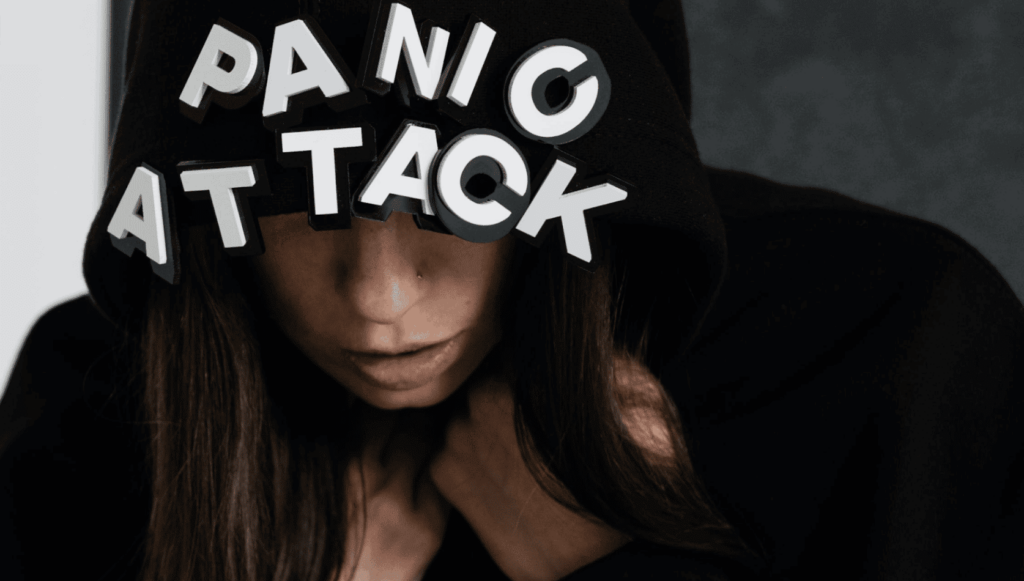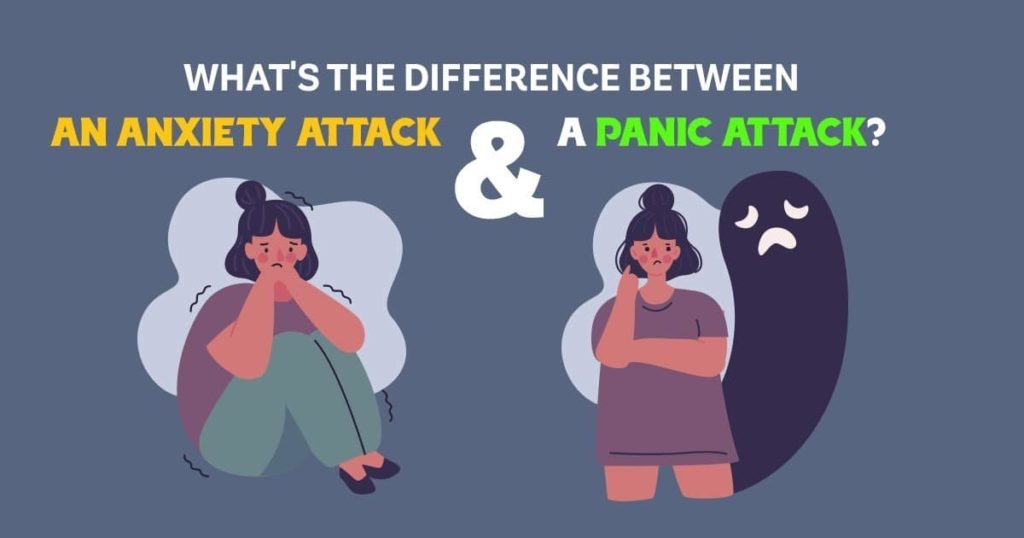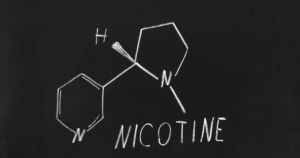There are two terms you might hear seemingly interchangeably with one another — anxiety attack vs panic attack. The two medical conditions are similar, but there is also a difference between an anxiety attack and panic attack symptoms and what the two could look like as they happen.
Below we’ll go into some detail about distinctions between the terms.
What is Anxiety?
Anxiety is something that we all commonly experience from time to time in life. An anxiety disorder is different. When you have an anxiety disorder, you experience excessive, ongoing worry and a sense of fear even about simple everyday situations. Anxiety can include feelings of intense fear or terror.
When you have an anxiety disorder, it affects your daily life. You can’t control how you’re feeling or the situations where your anxiety will strike most intensely. Due to your anxiety, you may end up trying to avoid specific triggers, such as particular places that make your symptoms worse. There’s often a very significant impact on your everyday life and your general quality of life.
Anxiety disorder is an umbrella term within which there are specific types of anxiety disorders. There is a social anxiety disorder where you fear social situations, generalized anxiety disorder, separation anxiety disorder, and particular phobias.
People with anxiety disorders may experience:
- Feeling tense, restless, or nervous
- Muscle tension
- An impending sense of panic, doom, or danger for no apparent reason
- Increased heart rate or a racing heartbeat
- Heavy breathing
- Trembling
- Sweating
- Feeling tired or weak
- Problems concentrating
- Sleep disturbance
- Gastrointestinal problems
- An inability to control your worry
- Trying to avoid the jobs that cause you anxiety
Anxiety risk factors include:
- Traumatic event exposure—when you’re exposed to trauma, particularly as a child, you are at risk of developing an anxiety disorder at some point in your life.
- Health—having a serious illness or health disorder can contribute to anxiety disorders.
- Chronic stress—unrelenting stress exposure can cause anxiety or worsen symptoms. Work, finances, or being in a caregiver role are frequent sources of chronic stress.
- Other mental health disorders: When you have another mental health disorder, such as depression, you’re more likely to have anxiety.
- Genetics—anxiety can run in families.
- Substance use—if you misuse drugs or alcohol, it can cause or worsen anxiety.
Mental Health Center of San Diego
What is a Panic Disorder?
Unexpected panic attacks characterize a panic disorder. The attack symptoms include unreasonable fear and anxiety, leading to physical symptoms. You can become so afraid of having panic symptoms that you end up developing a panic disorder. Panic disorder is a type of anxiety disorder.
When you go through an attack, you may have a lot of physical symptoms. Some people feel like they have a heart attack. You may sweat excessively, feel your heart racing and have a hard time breathing.
The worry about having the attacks can lead to a chronic panic disorder, and around 11% of Americans experience a panic attack every year. Of those people, an estimated 2% to 3% will develop symptoms of panic disorders.
For many people with panic disorder, the attacks initially occur when they’re a teen or a young adult, but they can happen in children. Women are twice as likely as men to develop panic disorder.
Many of the same contributors to anxiety disorders also raise the risk of panic, including family history, mental health issues, and substance use.
An attack comes on without warning and is very sudden. You can’t stop one after it starts. Symptoms will usually peak within 10 minutes and begin to subside shortly after.
Specific symptoms of panic attacks and sudden feelings include:
- Chills
- Chest pain
- Choking feeling
- Sensation of smothering
- Blood pressure spikes
- Hot flashes
- Problems breathing
- Fear of losing control
- Feeling like you’re about to die
- Intense terror
- Nausea
- Racing heart
- Tingling or numbness in fingers or toes
- Trembling or shaking
- Sweating

Mental Health Center of San Diego
Anxiety Attack vs Panic Attack – The Symptoms
The symptoms of anxiety and panic attacks are similar, such as dizziness and shortness of breath. There is a difference between an anxiety attack and panic attack symptoms, however.
- First, anxiety is part of your emotional response that’s a normal part of the human experience. There are situations where it’s not only expected but healthy and productive to experience anxiety.
- Only when anxiety interferes with your daily life is it a disorder.
- Extreme panic is not a normal emotional response. There’s intense fear and a range of mental and physical symptoms that create severe discomfort.
- In the Diagnostic and Statistical Manual of Mental Disorders (5th edition), known as the DSM-5, there are diagnostic criteria for a panic attack and a panic disorder.
- The DSM-5 explicitly uses the term panic attack.
- Also, these attacks can be a symptom of other mental health disorders or they can occur even in the absence of a disorder at all.
- There isn’t a definition for an anxiety attack in the DSM-5. Instead, you find diagnostic criteria for anxiety disorders. You’ll also see anxiety mentioned in obsessive-compulsive disorder and disorders related to stress and trauma.
Attacks are a highly acute situation with rapid onset. Anxiety is something that tends to be chronic and progressive without treatment.
The symptoms of anxiety are similar to panic but more persistent and less intense. Attacks of panic rapidly come and go, while anxiety symptoms are present most of the time.
Effective Treatment Options
While there are differences in how long symptoms last and their intensity, the treatments are similar. A health professional can diagnose your condition and help create a treatment plan for you.
- Psychotherapy is one treatment. During therapy for either disorder, you learn how to understand your symptoms. You can start to explore your negative thought patterns so you can change them and ultimately change your behaviors.
- Specific types of behavioral therapy may be helpful, such as exposure therapy or cognitive-behavioral therapy.
- You may take medication for an anxiety or panic disorder to help minimize or eliminate your symptoms. Medication like selective serotonin reuptake inhibitors works exceptionally well when you combine it with therapy.
- You can rely on self-help techniques to work through your symptoms and find coping strategies that work for you.
- Lifestyle changes like staying active, maintaining a social support network, and avoiding substance use can help with symptoms of both health conditions.
Mental Health Center of San Diego
Key Takeaways
You’ve likely heard people say they’re having an anxiety attack before, or perhaps you’ve said it about yourself. There’s not a medical diagnosis for an anxiety attack. Instead, you may be experiencing symptoms of anxiety disorders, or you could be experiencing panic.
Anxiety disorder symptoms are persistent and chronic, and intense anxiety can occur on a longer-term basis. Panic attacks are sudden and unexpected and often have more physical sensations, such as a rapid heart rate, than anxiety disorders. These attacks don’t always indicate a mental health disorder or the presence of another condition. You can learn more about Anxiety Treatment in San Diego here.
Both are treatable by mental health providers with options like anti-anxiety medications, support groups, therapy, and coping strategies like deep breathing exercises. To learn more, call (858) 258-9883 and talk to the team at The Mental Health Center of San Diego.









